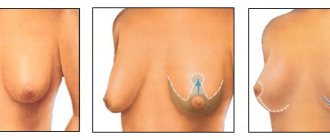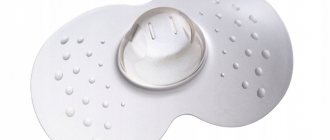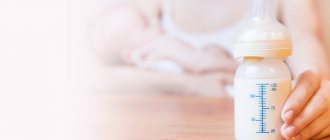Every mother faces the cessation of breastfeeding and is always worried about how to stop breastfeeding without causing harm to him or herself. Breastfeeding should be completed gradually, without using any radical actions. By following all the rules, the weaning process will be natural and not very difficult.
One-year-old baby sucks at the breast
When to wean
Until what age to breastfeed a child, each mother must decide individually. There are certain signs that indicate it is time to stop breastfeeding. The main features include:
- If a child's daytime nap is avoided without breastfeeding;
- If it is not the mother who puts the baby to bed at night, but the father or grandmother;
- The child very rarely wakes up at night;
- The child requires mother's milk no more than 1-3 times throughout the day, most often this is associated with sleep;
- The baby asks for the breast only once in the morning;
- Milk production ends;
- Mom goes to work and leaves for a long time;
- Signs of the baby’s psychological maturity have appeared (the desire to eat, drink, communicate with dad or other adults, and shows interest in the parents’ food).
Baby at the breast
Video: 5 tips from Dr. Komarovsky
IMPORTANT: The baby should be weaned from the mother's breast gradually in order to reduce the child's stress reaction to a minimum.
To reduce breast milk production to a minimum, you should listen to the advice of Dr. Komarovsky.
- Drink less liquid: tea with milk, green tea, dried fruit compotes. It is better to wean your baby in winter. At this time, you want to drink less, and it’s safer for the baby: there’s less risk of catching an intestinal infection.
- Reduce the number of times your baby latches onto your breast during the day.
- Do not express milk completely when feeding comes. Any pumping leads to an increase in lactation.
- Increase physical activity. Any sports, jogging, jumping - the main thing is to increase sweating. With sweat, excess fluid comes out and milk production decreases.
- Forget for a while foods that promote lactation: nuts, broths, bread with cumin, watermelons, various milk porridges, carrots, pumpkin.
What time of year is best to choose?
How and when to stop breastfeeding your baby? It is best to stop feeding milk in the fall. Over the summer, the baby managed to replenish his body with the necessary vitamins and received good training before the cold winter. In addition, mom will not need to drink as much as during the summer heat. She will wear closed clothes that hide her breasts from the baby, and he will not be able to focus on his favorite activity.
How to wean your baby from breastfeeding
It is also very important that in the fall the activity of pathogenic microorganisms will decrease significantly, and the baby most likely will not be able to catch an intestinal infection.
Note! In summer, lactation intensifies somewhat, and with a sharp refusal to feed, this contributes to the appearance of lactostasis.
Reluctance or forced choice?
Breastfeeding is a natural process. Up to 80% of new mothers struggle with healthy lactation. Some people are unable to establish the feeding process, as a result of which the child is transferred to formula. Mothers who refuse breastfeeding are guided by individual reasons or a combination of reasons.
- Lack of time. A woman who feeds a baby spends a lot of time on this process. In the first months after birth, the baby is applied to the breast every 2-3 hours. The baby can sleep while sucking continuously. A woman, instead of doing useful things, is forced to hold her newborn in her arms for hours.
- Fear for your body. Many women gain weight during lactation, the skin on the mammary glands stretches, the nipples are absorbed by the baby and become like thimbles. This scares new mothers because every woman wants to remain attractive.
- Convenience of artificial feeding. The formation of lactation is a complex and labor-intensive process. A new mother is forced to deny herself her favorite foods and exclude sweets and alcohol from her diet. By replacing breastfeeding with a bottle, a woman again becomes free in her preferences.
- Painful sensations. Cracked nipples appear especially often in the first months of breastfeeding. Each time a newborn is placed on the breast causes excruciating pain. This forces the woman to give up lactation.
- Desire for independence. Modern ladies are often ready to go to work within the first month after giving birth. The need to replenish material well-being makes you want to give up breastfeeding in favor of an adapted formula.
For women who refuse lactation of their own free will, the arguments in favor of breastfeeding are not significant. Most new mothers can breastfeed, but they don't want to.
The overwhelming majority of reasons are simple excuses and have nothing to do with the real need to stop lactation. Women make forced choices:
- who require treatment with toxic drugs - chemotherapy, radiation, some antibiotics;
- with breast tumors;
- with immunodeficiency virus;
- having dangerous infectious diseases that can be transmitted to the baby.
What to do with milk
Should I give water to my baby or not?
For 2-3 weeks after weaning, milk will still come in. If lactation is mature, then the amount of milk produced will decrease significantly, since it is no longer needed. What to do with breast milk after weaning the baby? When your breasts are full, you can express milk, but only until there is slight relief.
Expressing milk using a breast pump
What to do with breasts
If the mother gets sick while breastfeeding, will the baby get sick?
What should you do with your breasts when weaning your baby? If the process of weaning occurs gently and gradually, then the mammary gland has time to adapt to changes in feeding periods, and nothing will have to be done to it. But, if the chest is full, pain and discomfort appear, then you need to strain a little until you get some relief. Cold compresses of cabbage leaves or ice and a light massage with camphor oil will help relieve pain and inflammation.
Note! Nursing mothers should know that to stop lactation there is no need to bandage the breasts, as this will not only not reduce the flow of milk, but can also lead to breast diseases.
Compresses will help relieve inflammation
Symptoms of lactostasis
- temperature rise to 38 degrees
- painful lumps in the chest
- redness of certain areas of the chest
- pain during feeding and after emptying the breast
Despite numerous recommendations from doctors to prohibit contraction of the mammary glands, many women still use this method to stop lactation so that the milk “burns out” faster.
Often nursing mothers ask questions: “ How to properly bandage the breasts?” ", " How long to walk with a bandaged chest? “,” “And is it necessary to tighten the breasts at all?” The following video will answer these questions:
What can you put on your breasts?
What to put on your breasts to wean your baby off? In order for the baby to stop latching on the breast, you can lubricate the nipples with sea buckthorn oil or chlorophyllipt solution. These products do not pose a threat to the child’s health, but cause persistent disgust. What else should I put on my chest to wean my baby off? Some mothers advise using garlic juice - if you spread it on the nipples, it greatly changes the taste of the milk, and the baby begins to cry and freak out.
Important! Often mothers think about what to put on their breasts to prevent the baby from sucking. You should not lubricate the nipples with any medications, as well as aloe juice, wormwood, mayonnaise or mustard, as this can cause an allergic reaction and stomach problems in the baby.
Stress when stopping breastfeeding
Regardless of the circumstances (weaning is stressful for both mother and child), the baby needs to adapt to new conditions, and the mother’s body needs to rebuild its hormonal levels. For a baby, the transition from breast milk to adult food should be natural and gradual.
Advice. It is best if the child is psychologically ready for this, then it will be much easier for the mother to stop lactation, and the child’s psyche will not suffer.
It is very important to establish psychological contact with the child
Drugs to stop lactation
If a woman decides to stop lactation with the help of medications, then you need to understand that only a gynecologist can prescribe such medications. In addition, it is worth considering that chemical drugs cause many side effects and disrupt the functioning of the hormonal system. You also need to remember about contraindications, such as diabetes, kidney and liver diseases.
Tablets will help to quickly stop milk production, but this process is irreversible, and a nursing mother should be one hundred percent sure that her baby already needs breast milk. As a rule, tablets are taken in a course of one to seven days. It is at this time that the milk in the breast burns out.
If a nursing mother nevertheless decides to stop lactation with the help of chemicals, then she must adhere to the following rules:
- Take tablets only as needed;
- Do not increase or decrease the dosage prescribed by the doctor;
- To prevent inflammation in the breasts, it is necessary to constantly express milk;
- If after taking the pills any deviations in your health appear, you should immediately consult a doctor;
- After taking the pills, you can no longer feed the child, as this may be dangerous to his health;
- When using tablets, you should not tighten your breasts.
Additional Information. The most negative side effect of stopping lactation with the help of medications is that when the next pregnancy occurs, there may be no milk at all.
Taking pills may harm the mother's health
A collection of tips for breast health
- Doctors recommend not using breast tightening to stop lactation. This is not only painful, but also harmful to health.
- Medical treatment to reduce or stop milk production should be resorted to in exceptional cases and only on the recommendation of doctors. Taking pills to suppress lactation can disrupt your hormonal levels. In addition, these drugs may negatively affect subsequent pregnancies.
- A comfortable, tight bra made of cotton fabric is a “holiday” for the breasts during the cessation of lactation. Avoid inserts and “bones” in the cup that compress the breast. A properly selected bra will help restore your breasts after breastfeeding and prevent them from sagging.
- Water procedures are very useful for breast restoration. Cold water, in contrast to hot water, activates physiological processes in the mammary glands, thereby increasing blood circulation. And the use of special massage shower heads will enhance the impact of water.
- Special exercises will help restore tone and strengthen the pectoral muscles. Regular training will return your breasts to their former shape in a short time.
- Modern cosmetology has developed many cosmetic preparations for breast restoration. Creams, lotions, and gels contain useful nutritional, vitamin, and regenerating components of natural origin. These are extracts and extracts from plants, seaweed, wheat germ, elastin, plant collagen.
IMPORTANT: To restore the mammary glands after breastfeeding, you should use special cosmetics for the breast.
What folk remedies do mammologists recommend?
In order to reduce the flow of milk, you need to drink decoctions of diuretic herbs, which will remove excess fluid from the body, and accordingly, milk production will decrease. To do this, it is better to use parsley leaves, lingonberries, juniper berries, birch buds, as well as knotweed grass and cornflower flowers. It is recommended to drink no more than 1.5 liters of this infusion per day. You need to take this diuretic for 1-2 weeks.
In order to relieve pain and inflammation in the chest, you can make special compresses. It is best to use these:
- With camphor oil. Apply camphor oil to a piece of gauze or bandage, apply it to the chest, cover with a plastic bag, tie with a terry towel and hold for 5-7 hours.
- With honey cakes. Mix rye flour with a small amount of honey, make soft cakes and apply to your chest.
- From cabbage leaves. Pour boiling water over cabbage leaves, dry and crush with a rolling pin, wrap them around your chest. Leave until the leaves wither.
- With ice. Apply ice wrapped in a towel to your chest for 10-15 minutes.
Cabbage leaf compress
Sage to stop lactation
One effective way to suppress lactation is to drink sage leaf tea. This medicinal plant has a gentle effect on the female body, helps reduce the amount of milk in the breast, and also fights various diseases of the female genital organs.
To prepare anti-lactation tea, you need to pour one tablespoon of dry sage leaves with a glass of boiling water and leave for 30-40 minutes. Next, the infusion should be strained and taken up to five times a day, half a glass.
If the baby does not latch on
If a child stops taking the breast, first during the day, then before going to bed at night and after waking up, and subsequently at night, then this process is called self-weaning. A child can refuse the breast between one and five years, when over time he simply forgets about the existence of the breast. This option is considered the most ideal for both the child and the mother.
Why did the baby stop breastfeeding? The main reason for self-weaning is considered to be that the baby moves to a new level of psychological development: the baby begins to realize that he is a person separate from his mother. At the same time, the child not only switches to a new way of obtaining food, he begins to perceive the reality around him differently.
Important! A nursing mother should be wary if a baby, who is not yet a year old, suddenly refuses to breastfeed, behaves very restlessly and is constantly capricious.
Pediatricians' opinion
According to many pediatricians, there are situations when it is better to delay stopping breastfeeding for about a month. Such situations include:
- The child has a high temperature and feels unwell;
- The period of eruption of the first teeth;
- Summer is too hot;
- Moving to a new place of residence;
- Sudden change of environment;
- Mom goes to work.
In such cases, a sudden transfer of the baby to artificial nutrition can provoke general dehydration in the baby’s body. For this reason, pediatricians do not recommend combining such drastic changes in a child’s life with weaning.
The period of breastfeeding is beneficial for both the baby and the mother, but someday this wonderful time ends. To prevent a mother from feeling guilty, disappointed, or other negative emotions after stopping breastfeeding, she should study in advance all the information on how to properly wean a child from the breast.
Why women started breastfeeding again
The “baby boomers”—children born during the demographic explosion, when bottle feeding was considered the norm—all of these factors had a more than noticeable impact. A little later, in the mid-seventies, breastfeeding again became fashionable, especially among wealthy and educated people.
Perhaps the return to natural feeding in the late 1970s was unwittingly facilitated by an overly aggressive advertising campaign conducted by artificial nutrition manufacturers in developing countries. That's because in some countries, formula-fed babies were 25 times more likely to die, largely because bottles are harder to sterilize in poverty and drinking water is often contaminated with pathogens.
When this became known, women across North America and Europe rebelled against formula manufacturers, and a true breastfeeding renaissance began. In just one decade, the number of women exclusively breastfeeding their children has almost tripled.
“Generation X” and “children of the 2000s” also did not escape the risks hidden in formula bottles. Although the number of breastfeeding advocates has continued to rise steadily over the past two decades, from 65% in 1995 to 80% in the last few years, official recommendations on this matter are still not being followed.
For the 20-25% of babies who will never receive a drop of breast milk, and the further 25% who will be transitioned to formula within the first eight weeks of life, the growing popularity of breastfeeding is little comfort.
Even among those who are breastfed from birth, half begin to supplement with formula feeding already in the first week of life. In the United States, only 13% of mothers follow the World Health Organization's recommendations to breastfeed exclusively for the first six months and then gradually introduce complementary foods until they are two years old or longer. There are barely 1% of mothers in the UK who exclusively breastfeed their six-month-old baby.











